Morgan $ - PL and DMPL Changes With Light Positions
 lilolme
Posts: 2,916 ✭✭✭✭✭
lilolme
Posts: 2,916 ✭✭✭✭✭
Had a little time to kill so I thought I would try to take some quick photos to show how PL and DMPL Morgans change with the lighting position. There are many more. I had noticed a lot of different types of PL photos posted and maybe this would show a little bit of what is happening with them. I included a regular MS Morgan as a reference I guess. Then there is a weak PL (labeled PL but not strong), a 'normal' DMPL (1882 CC) and a deeper DMPL (1884 CC).
These were quick photos with the snap-o'matic and not trying to optimize anything. On the 1884 CC DMPL I got some camera reflection (unfortunately) in the lower left except for one photo. I was just snapping the shots and didn't notice it until done.
For each particular set/group I didn't move or change the camera or lights and tried to place each slab in the same position (fairly close) for comparison. The difference between each set/group is the light position to create the different looks between the set/groups.
And disclaimer again - I am not a photographer, not even an amateur one, just my now 20+ year old snap-o'matic.
So no professional photography here. ![]()
This is kind of the 'normal' photo. The luster in an X and in this case a little more of a horizontal X. Can see the X in each and how it decreases from MS to PL to DMPL.
Note: the 1884 CC (the deepest mirror) picked up a lot of the camera reflection in the lower left (sorry, it is that hazy look in the photo from 6 to 9 o/clock).
Note: Often the 'normal' is a + (vertical and horizontal) type luster. I did not do one of those.
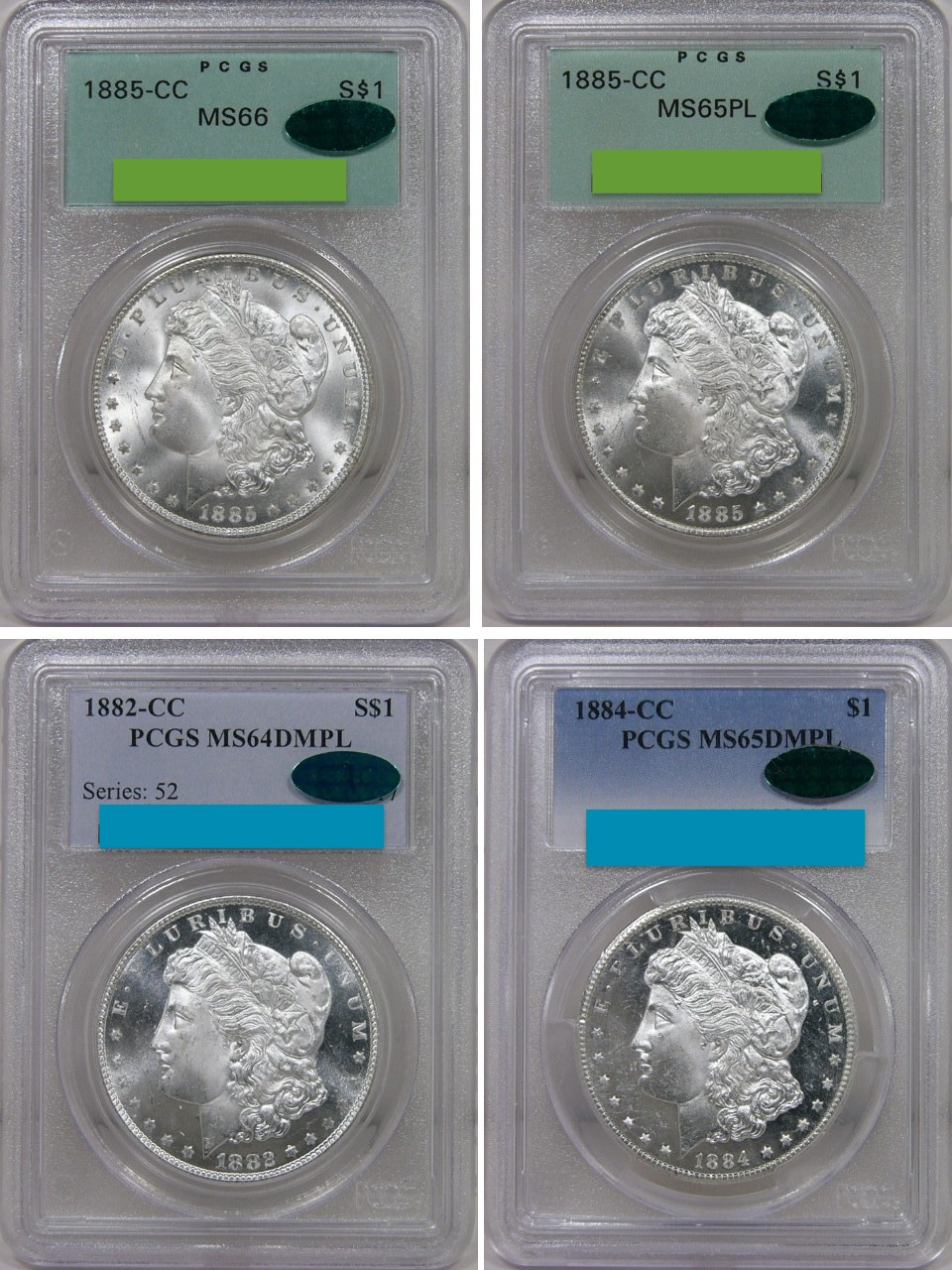
.
This set/group of photos the lights were moved forward or toward the slab. Note how the luster is a little more horizontal and not as intense. It kind of makes the PL mirrors look better but also cuts into the device luster. Could tweek this to try and improve the device.
Note I didn't get any camera reflection on the 1884 CC. ![]()
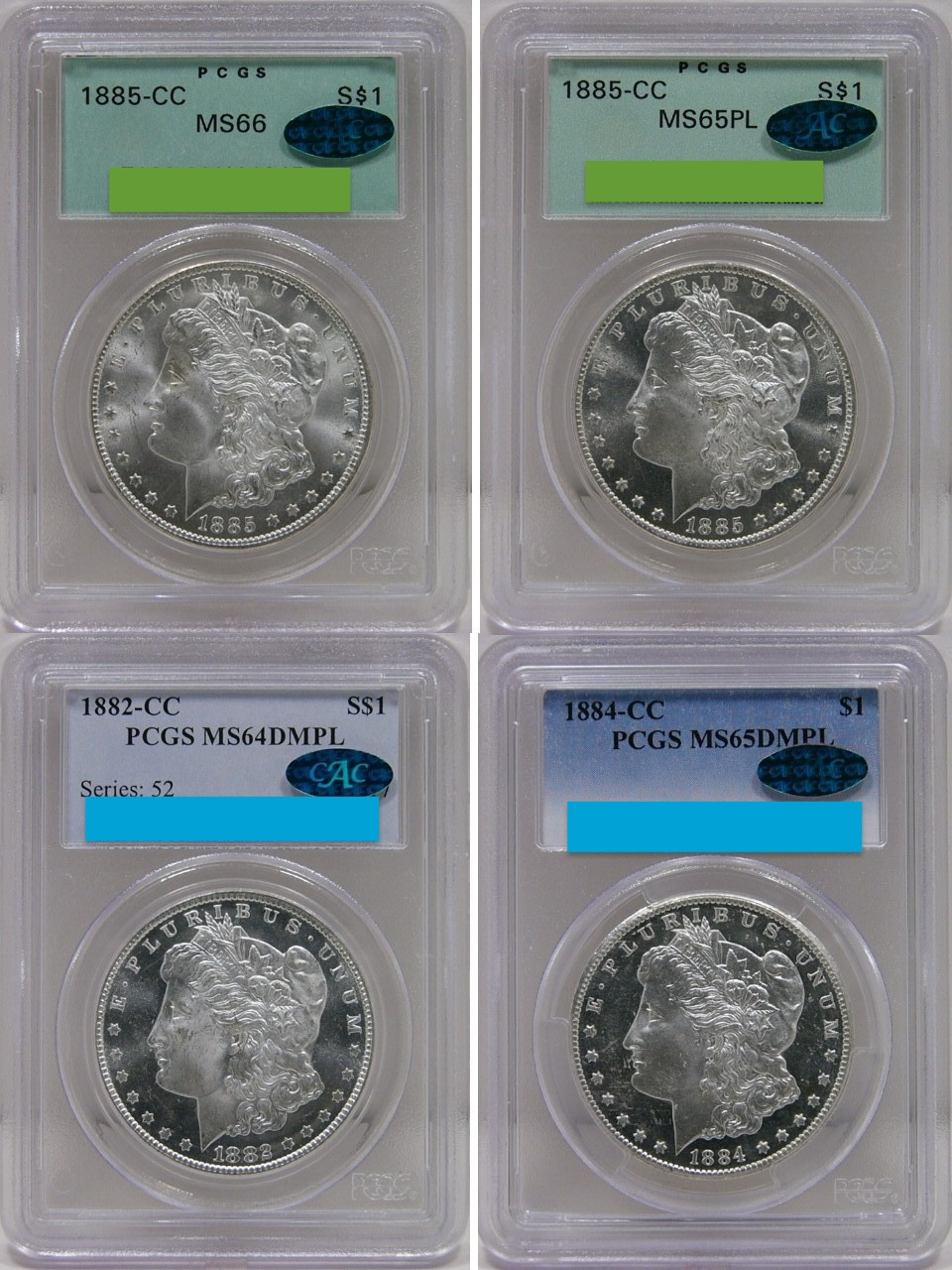
.
This set/group of photos the lights were moved aft or away from the slab. Note how the luster is almost vertical (1 to 7 and 11 to 5). It gives a 'darker' area to the PL mirrors by focusing the viewable luster to the top and bottom and also keeps much of the device luster. Tweek this one for better PL images.
Note there is a little camera reflection on the 1884 CC in lower left (not as bad this time).
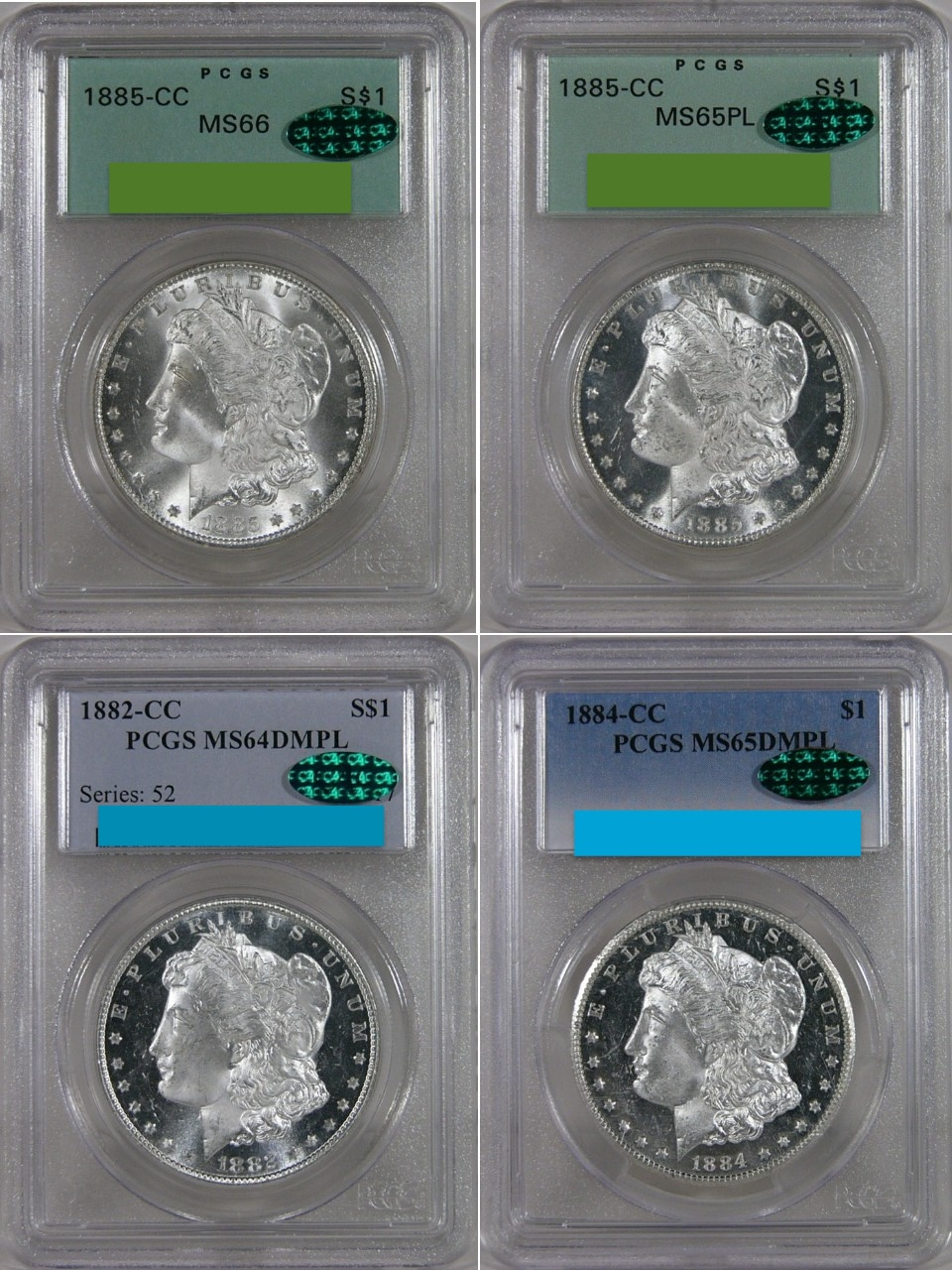
.
This set/group of photos is not anything I would have thought of. However, after seeing some posted photos that kind of look like this I thought I would throw them in as a group. The lights are moved forward such that they are at the side of the slab (almost behind). I would call it a low angle lighting. Not much if any luster gets to the camera and what is left is a kind of flat looking photo. The MS 1885 CC has kind of a uniform flatness. The PL and DMPL look darker and perhaps deeper but again devices flat. This 'side' or low angle lighting can be seen reflecting off of the slab and ring.
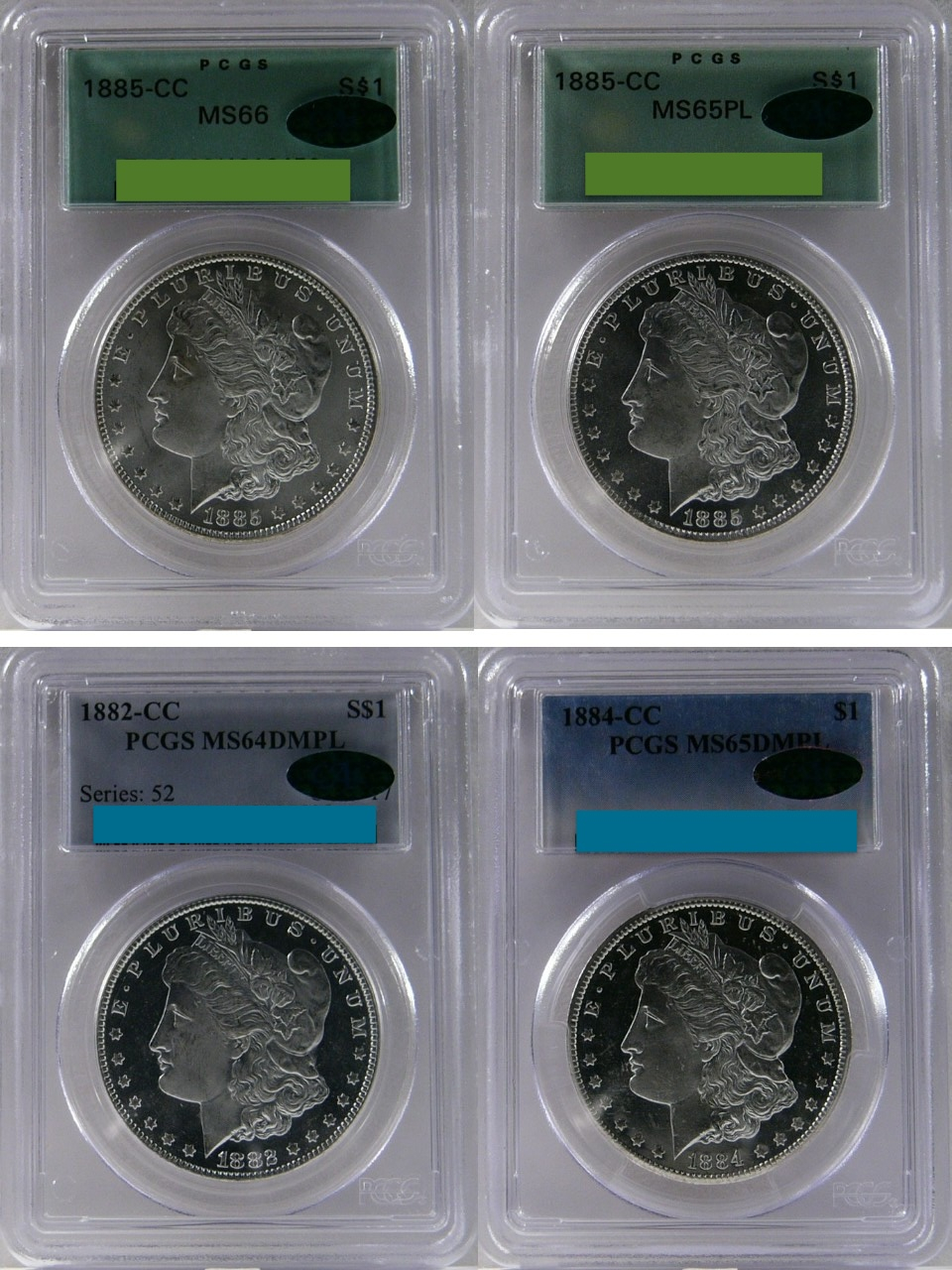
.
That is it for the groups.
I tried to take a reflection type photo of the 1884 CC. Semi-successful I think - maybe. ![]()
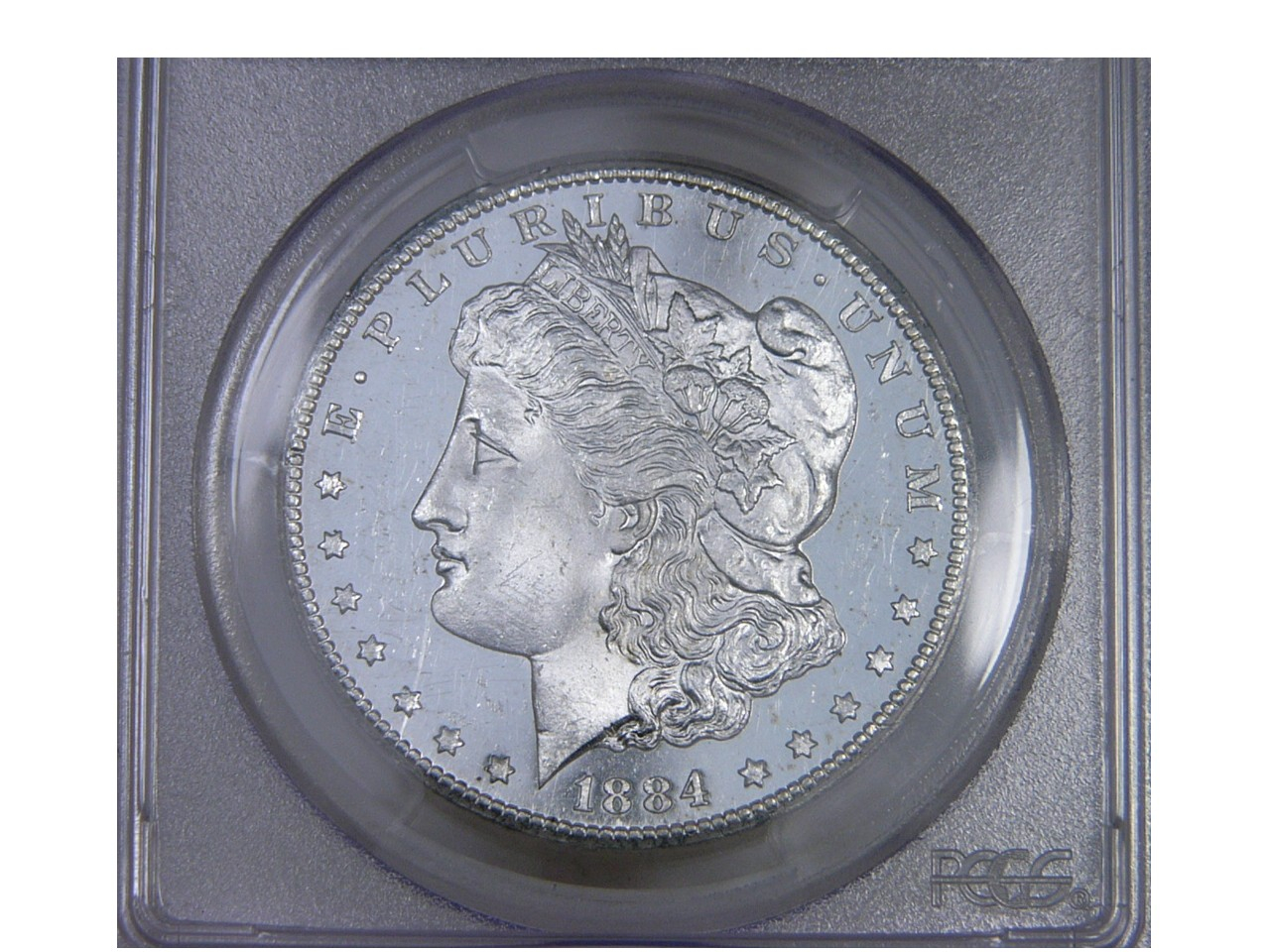
.
And one more, an old scenic photo from Mt Pugh (this is what the snap-o'matic was bought for all those years ago). ![]()
A little moisture hazy that day.
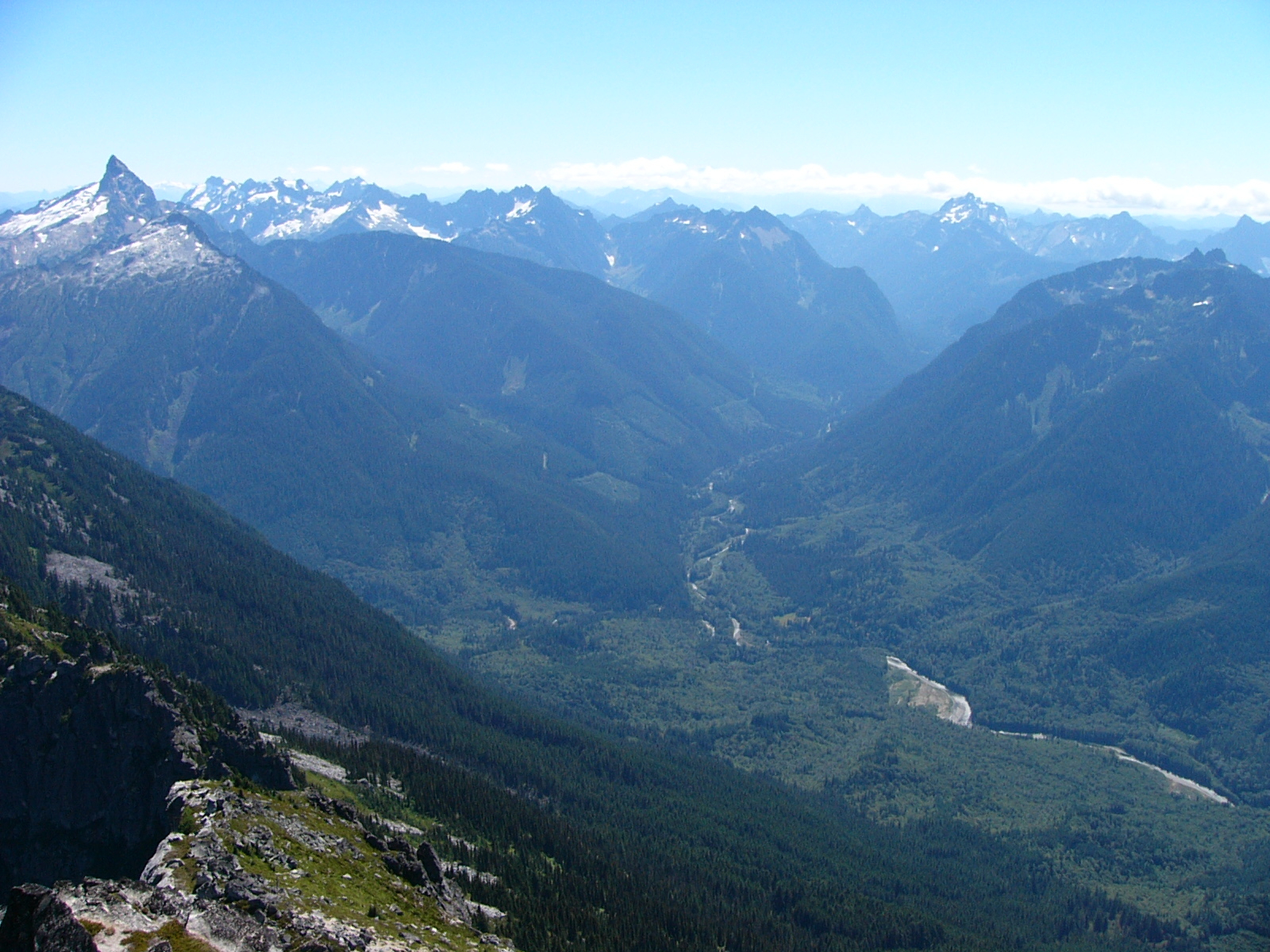
https://youtube.com/watch?v=hYCRaWPlTIE Sophie Lloyd, guitar shred cover of Panama (Van Halen)
https://youtube.com/watch?v=dOV1VrDuUm4 Ted Nugent, Hibernation, Live 1976
RLJ 1958 - 2023
Comments
Nice examples of how lighting, angles and distance, never mind ISO's and F stops effect the photos. Funny you mention the last set of photos, sometimes when I view my PL/DMPLs I like to place the coins under my desk with no direct light. Agree looks flat but the reflectivity, although dark, still comes through. When I do that with a non-PL coin, no reflectivity.
Nice set of photos. Glad that you picked CAC coins, since PL and DMPL standards have fluctuated a lot over the past 30 years. One point you make is that it's important to be consistent with the light you use to evaluate coins.
Keeper of the VAM Catalog • Professional Coin Imaging • Prime Number Set • World Coins in Early America • British Trade Dollars • Variety Attribution
Wow! Fascinating how much variation you created!
Casual collector: Morgans & Peace Dollars & 20th Century Type Set. Successful BST transactions with ProofCollection, Morgan13, CoinFinder, CoinHunter4, Bretsan.
It's all about the lighting for sure. I believe per the photography book they used the terms high angle and low angle. I couldn't quite figure out from your description where the lights were for each photo but definitely when you want to really show each mark and ding you go with a low angle so the light catches everything.
http://ProofCollection.Net
@coastaljerseyguy Thanks and I think I understand about the below the desk. If so, then another way to simulate this is to hold the slab basically vertical in front of you where light does not directly hit the surface (no light behind you). And yes it can make them look quite different but also can reveal stuff if present.
@messydesk and @john_nyc1 Thanks, just killing some time.
@ProofCollection I see what you are asking about the light position. When typing things out sometimes one will not think about what others can't know. In this case it is how the photos were taken. As stated I am not a photographer so I don't have any setup. I get an 'open side and open top' box out of the closet and the slab goes in it and the slab is mostly vertical resting against the back wall of the box and where the front is the open side. The camera is on a mini-tripod (got it for hiking) about 6 - 8 inches high and is placed several inches or more away from or in front of the slab. Then try to adjust the tilt of the slab to the tilt of the camera so that each are parallel. Lights, in this case, are then on the left and right side between the slab and camera or behind. Moving forward the lights are closer to the slab and aft the lights are probably behind the camera. The side photo the lights are spaced further left and right and about where the slab is relative to forward/aft. Lights are similar to convention table lights except have a base and not a clamp. As I noted in the OP there are many (many) more possible positions and includes the slab. When done back into the closet for all the stuff. Hope that clears it up.
https://youtube.com/watch?v=hYCRaWPlTIE Sophie Lloyd, guitar shred cover of Panama (Van Halen)
https://youtube.com/watch?v=dOV1VrDuUm4 Ted Nugent, Hibernation, Live 1976
RLJ 1958 - 2023